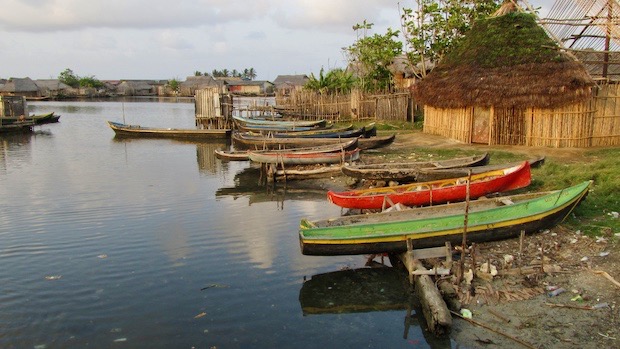
Youba Sokona of Mali is co-chair of the IPCC Working Group III. Photo: Citt Williams, OurWorld2.0
by Stephen Leahy
First published at National Geographic’s NewsWatch

Many indigenous peoples are living examples of societies thriving with sustainable, low-carbon lifestyles. Successfully meeting the global climate change challenge requires that much of the world shift from high carbon-living to low.
This shift is daunting. Current emissions for Australia and the United States average about 20 tonnes of carbon dioxide per person. In the coming decades that needs to fall to two tonnes per person as it is currently in Brazil or the Dominican Republic.
Emissions from most indigenous peoples are even lower and are amongst the lowest in the world.
All options for making the shift from high- to low-carbon living need to be explored and that’s why the United Nations University Traditional Knowledge Initiative (UNU) and Intergovernmental Panel on Climate Change (IPCC) invited indigenous peoples to a special three-day workshop in Cairns, Australia last week.
“Climate change is the result of our behaviour,” said Youba Sokona, co-chair of the IPCC Working Group III that will report to governments in 2014 on ways carbon emissions can be reduced.
The IPCC is the world authority on climate, assessing the state of knowledge on the issue every five to six years. Traditional knowledge of local and indigenous peoples have been left out until now.
“One of the critical solutions is to change our behavior, to change our production and consumption systems,” said Sokona, a climate expert from the African nation of Mali.
The Climate Change Mitigation with Local Communities and Indigenous peoples workshop offered a number of “examples of local peoples in Siberia, in Australia, northern Canada and in some African countries demonstrating that it is possible to change our behavior,” he said.

Marilyn Wallace, a Kuku Nyungkal Aboriginal woman. Photo: Citt Williams, OneWorld 2.0
“I live in a shack but I love being on my ‘bubu’, my traditional land,” said Marilyn Wallace of the Kuku Nyungka ‘mob’ (tribe) in northern Queensland, Australia.
Wallace has lived in towns but fought for years to “return to country” and live in her tropical forest homeland 60 kilometers from Cooktown.
At the workshop Wallace and every other indigenous delegate focused on land rights. The simple truth is that if they can’t live on and manage their lands with time-tested traditional methods, they can’t be part of the solution to climate change.
For complete article see Nat Geo’s NewsWatch







